

Click on the picture on the left below to see a larger version. Use the "back" button on your browser to return to this page.
In the right-hand column is a picture of the whole Moon (at about the same phase) indicating where the feature is situated.
Lunar Features and Notes
Here I discuss briefly the different features on the Moon and how they may have been formed. I also
cover the modern conventions of which way is up, and which way is West, and indicate my sources of information.
I have made every effort to be accurate but please be aware that I am not infallible and bring to my attention any
errors you may find. I will attempt to correct them speedily.

In early April 2005 the libration was particularly favourable for imaging the libration zone in
the south-east. This picture was inspired by the "QCUIAG Challenge" for May 2005 and won
the Quality Section. It is a mosaic of two frames taken from a
full mosaic of the 3.3-day Moon.
The pictures were taken with a ToUcam attached to my LX200 on 11th May 2005 at about 20:45 UT,
when the Moon was 3.3 days old. 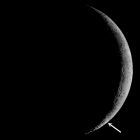
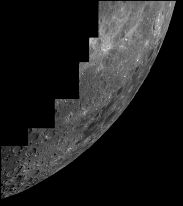
And again, in March 2007, the libration became particularly favourable for the libration zone in the south-east. This large mosaic covers an area north of the one above and was taken at first quarter. Clicking on the thumbnail will take you to a reduced imageŚclick on that image to see the full-sized version, but be aware that it loads 520K of images.
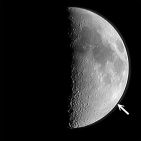

The South Pole. The page contains four pictures of the south-polar area including one that catches the south pole itself.
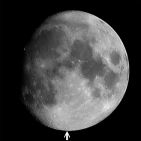
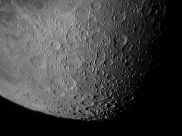
A smaller-scale view of the south-polar area. The page contains two pictures, one wide-angle (as shown on the left) and a closer picture of the south-pole area, both taken at 20 days.
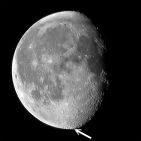
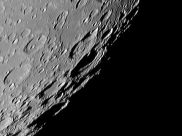
Boussingault is a fascinating crater in the libration zone of the far south. The page includes pictures at 17.6 and 6.4 days.
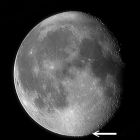
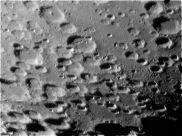
This area is to the east of Clavius in the rugged southern hemisphere. Jacobi, in the centre of the image, is a battered formation, 70 Km in diameter, with fairly high and steep walls. The floor is smooth but
supports a string of small craters across it. It is very old at more than 4,000 million years. The picture was taken at 19.9 days.
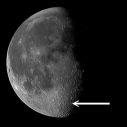
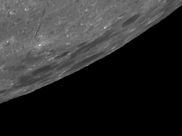
Mare Australe is an indistinct area of dark spots mainly on the far side of the Moon but a small part shows during favourable librations. The libration here is favourable but not dramatically so (4° 26' in longitude, -0° 4' in latitude). The page includes a second picture, taken two (lunar) days later but with an even-more favourable libration.
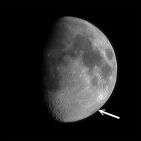
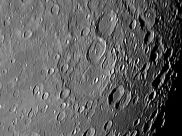
The largest crater is ancient Janssen with younger Fabricius overlying it. The page contains four pictures taken at various phases, including one picture taken in daylight.
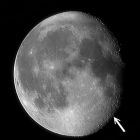
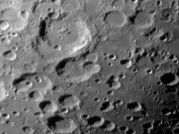
This region is west of the area above. The major craters are Maurolycus and Barocius, ancient craters dating back some 3,900 million years, situated in the rugged highlands of the southern hemisphere. The picture was taken when the Moon was 19.9 days old.
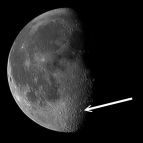
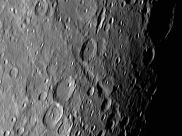
The area around Rheita and the Rheita Valley.

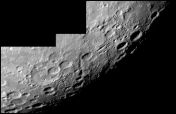
This is quite an interesting part of the Moon, down in the far south-eastern quadrant (although not quite as close to the limb as might appear as the edge of the picture is the terminator, not the limb). This is a composite of three images; clicking on the thumbnail will reveal the three individual images, together with a closer version of two of them, and with more-detailed
descriptions.
The pictures were taken when the Moon was 17.7 days old.

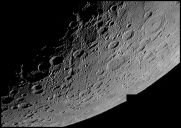
These are the southern highlands and much the same area as the picture above but with the light coming from the other direction. It covers the area from Petavius in the north to the Rheita Valley in the south.
The picture is a composite of two pictures taken when the Moon was 4.6 days old.
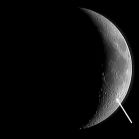
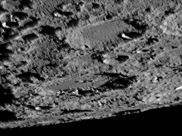
Boguslawski and Demorax are two large craters in the far south. These pictures were taken during a period of particularly favourable libration.
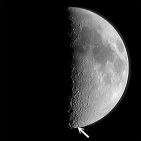
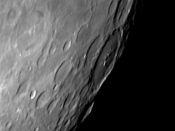
This is the far south-east and is east of my picture of the southern highlands. The major crater is Humboldt, seen at a very favourable libration and only 20 hours after full Moon.
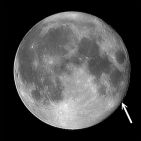
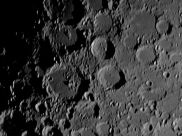
Walter is an old crater in the northern part of the southern highlands. It is elliptical, measuring 145 by 136 Km and is around 3,900 million years old. Walter happens to be exactly on the lunar meridian.
The picture was taken with a ToUcam attached to my LX200 on 19th December 2004 at 18:11 UT, when the Moon was 8.4 days old.
The area just north of here is shown in this picture.
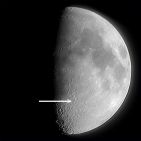
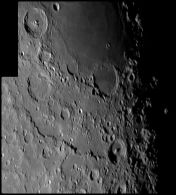
This mosaic of two images covers an area to the south of Mare Nectaris from Theophillus,
in the north, to Piccolomini, in the south. A larger-scale picture of Theophillus can be seen five pictures below this one.
The pictures were taken when the Moon was 18.4 days old.
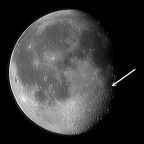
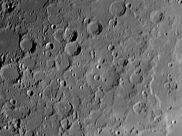
This is a rugged area of the southern uplands some 180 Km south of the landing site of Apollo 16.
The picture was taken with a ToUcam attached to my LX200 on 19th December 2004 at 17:40 UT,
when the Moon was 8.4 days old.
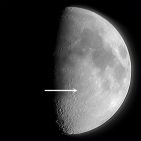
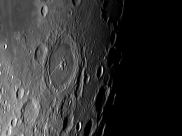
Petavius is the major crater here and is placed in the south-east quadrant.
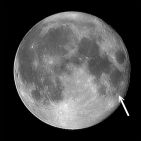
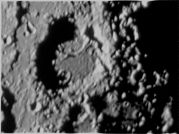
A close-up picture of Catharina, a very battered crater with its walls pot-marked with smaller craters. The picture was taken when the Moon was 19.7 days old.
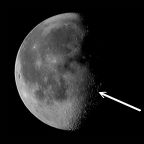
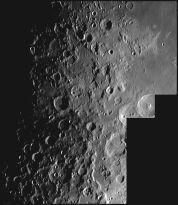
This mosaic of three images covers an area of the Moon from the southern shores of the Mare Tranquillitatis, in the north,
to the Descartes Highlands and crater Sacrobosco in the south.
The pictures were taken with a ToUcam attached to my LX200 on 15th February 2005,
when the Moon was 7.3 days old.
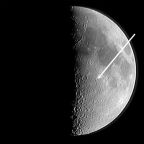
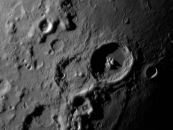
The craters Theophilus and Cyrillus are situated on the eastern shores of the Mare Nectaris on the western
side of the Moon. Cyrillus is the older of the two at around 3,900 million years. It is 100 Km in diameter
with steep slopes and three central mountains. Theophillus is half that age and slightly larger at 104 Km.
The central mountain is 400 metres high and has four peaks.
The picture was taken when the Moon was 19.9 days old.
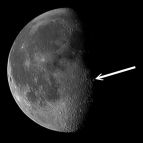
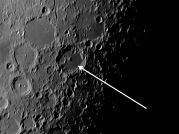
Five pictures of Albategnius, an old crater dating from about 3,900 million years ago. Three are general pictures and two are close-ups, and are taken at various phases.
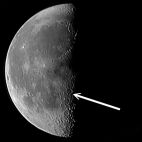
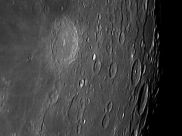
This area is in the far east and just south of the lunar equator. The large crater in the centre is Langrenus.
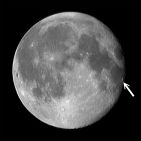
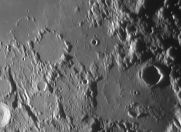
This picture is in the very north-west corner of the south-east quadrant, and shows the Sinus Medii in the corner. It is a very rugged area of mostly ancient craters that have been flooded with lava around 3,000 million years ago. Horrocks and Seeliger are somewhat younger and appear to post date the flooding.
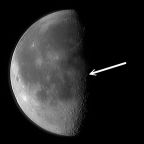
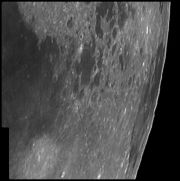
Mare Smythii is a well-defined mare in the libration zone, spanning the lunar equator. The page includes a link to a picture covering Mare Marginis as well.
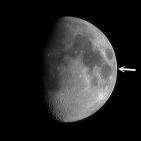
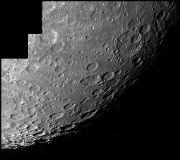
An area in the far south-east taken 2 days after full moon and with a favourable libration.
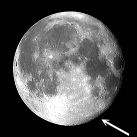
Home Back to the Moon